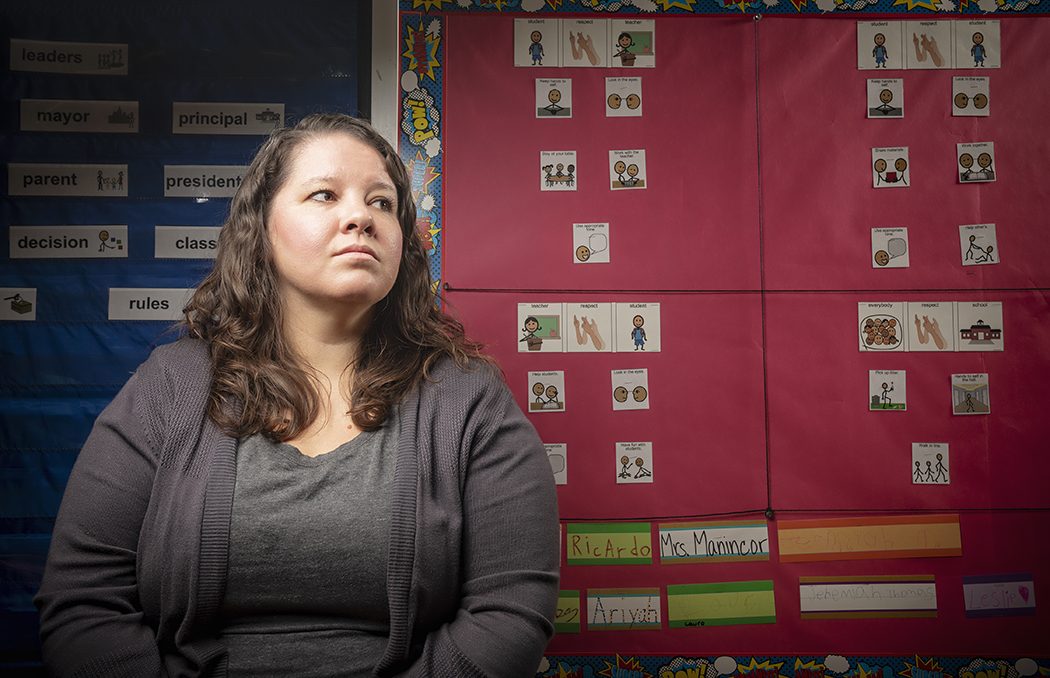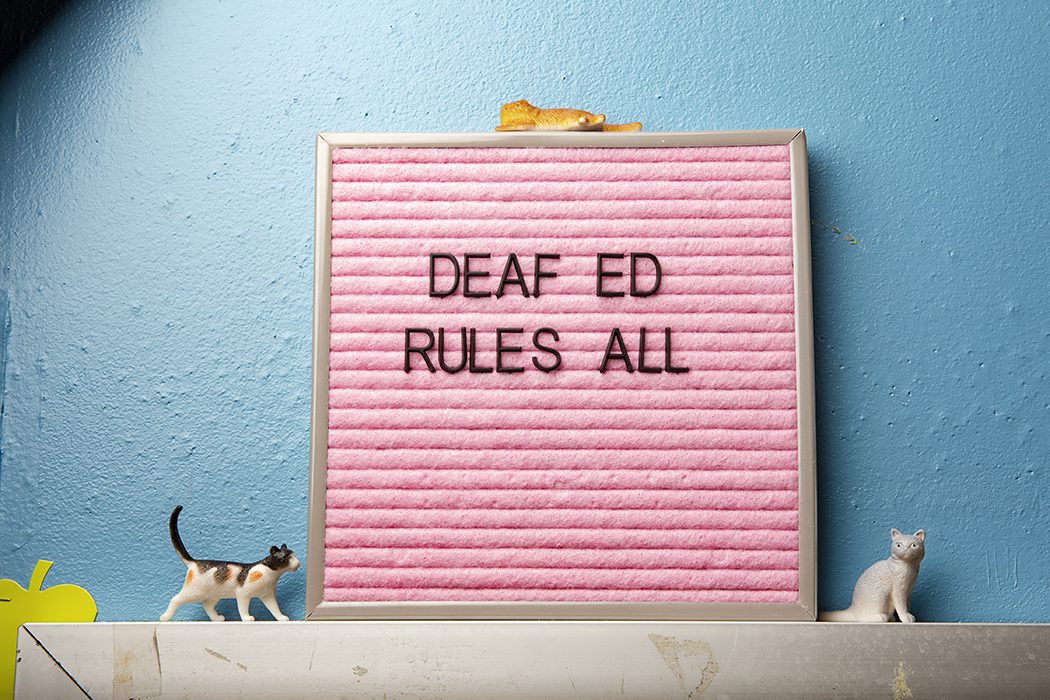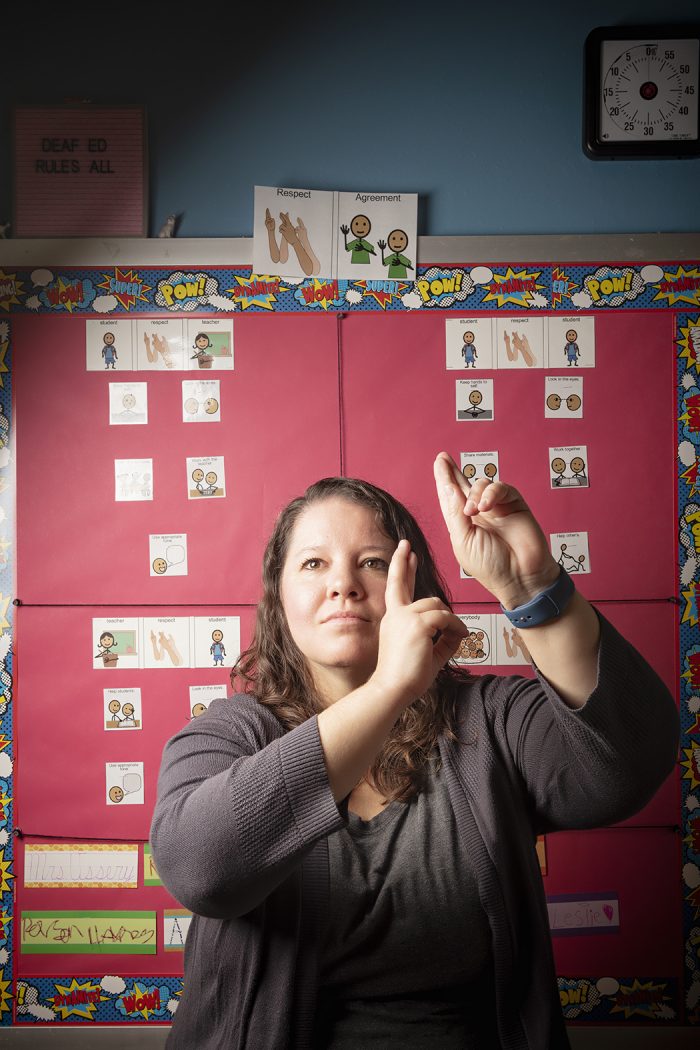
Photos by Danny Fulgencio.
Julia Manincor applied for jobs in biotechnology after graduating from the Rochester Institute of Technology in New York.
She received plenty of interest, but her need for a sign-language interpreter dampened prospective employers’ enthusiasm, she says.
Some companies flat-out turned her down. Others accommodated the interviews, but no one hired her.
Manincor did find her calling, though. She is now a teacher of deaf students at James Hogg Elementary in Oak Cliff, but her journey began in East Dallas.
Manincor grew up near and attended Stonewall Jackson Elementary, which was a regional school for the deaf in Dallas ISD. While many deaf students fall behind in elementary school, Manincor managed to stick with her peers. Her sister also is deaf, and their hearing parents learned to sign. They fought for their daughter to stay in high-level classes and receive the accommodations she needed.
About 90 percent of deaf children are born to hearing parents, most of whom don’t learn to sign, according to the National Institute of Health. The median reading level for deaf high-school graduates is equal to an average fourth-grade student, according to a 2012 report in the Journal of Deaf Studies.
Manincor’s parents’ commitment to learning helped her develop the vocabulary she needed.
“I don’t know where I would be without that communication,” Manincor signed through an interpreter.
Manincor is profoundly deaf, meaning she hears almost nothing at all on her own. She received hearing aids in elementary school, but they didn’t have much impact. She says she had to work harder than other students to keep up, and there weren’t many deaf students in her classes.
But as a teacher, her hearing loss is an advantage.
 “I feel like I can connect with them,” she says of her Hogg students. Of the 102 deaf education staff in Dallas ISD, only six are deaf or hard of hearing. “There are not a lot of deaf teachers, but I am deaf just like them.”
“I feel like I can connect with them,” she says of her Hogg students. Of the 102 deaf education staff in Dallas ISD, only six are deaf or hard of hearing. “There are not a lot of deaf teachers, but I am deaf just like them.”
She teaches kindergarten through fourth-grade students who are deaf and have special needs. Many of them are on the autism spectrum and have language delays. Manincor helps them learn to sign and communicate beyond pointing. “I have seen them slowly improve over the last four years,” she says. “I am excited to see them use language and words and trying to communicate with other friends in class.”
She knows how far deaf people can go in life.
The desire to push herself academically led her to move to the Texas School for the Deaf in Austin, where she boarded through high school. Being surrounded by high-achieving deaf students was a boon to her confidence, and Manincor excelled there while playing soccer and other sports.
After graduating from Rochester and losing interest in biotechnology, she began substitute teaching. Other teachers and administrators encouraged her to become a teacher, so she earned a master’s degree in deaf education at Lamar University in Beaumont before an internship and full-time job at Hogg, one of the deaf education schools in Dallas ISD.
Manincor eventually received a cochlear implant and was amazed to hear the rain falling and her steps on the pavement. One day, sitting alone in her house, she realized she could hear the ticking of a clock. “That is so annoying! How do you ignore that?” she says.
Her husband Jeremiah is also deaf, and they have two sons (Caleb, 9, and Joshua, 4) who have normal hearing but know sign language. The family strategically set up mirrors in their house so they can see what the boys are doing behind their backs. She says she enjoys being immersed in the deaf community while existing in a hearing world, and her last four years of teaching have been an important part of that. “I felt very isolated and alone, but now I feel more involved socially,” she says.






